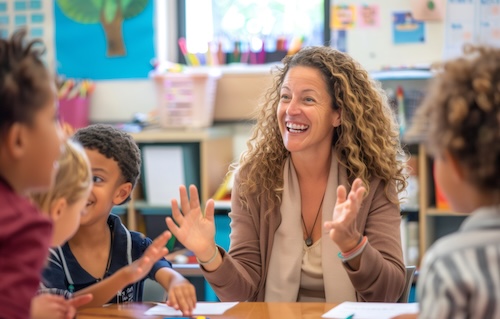Key points:
The demands of modern education often leave teachers and students feeling overwhelmed and exhausted. From juggling multiple responsibilities to meeting high expectations, burnout has become a significant challenge in schools.
Social-emotional learning (SEL) offers a way to combat this issue, providing tools to build resilience, foster connection, and prioritize well-being. Here are three ways SEL can help prevent burnout for both teachers and students.
1. Building emotional resilience
One of the primary causes of burnout is the inability to manage stress effectively. SEL teaches essential skills such as emotional regulation, mindfulness, and stress management. For students, practicing mindfulness exercises helps them stay focused and calm during high-pressure moments like tests or presentations. For teachers, incorporating SEL strategies such as deep breathing or reflective journaling can create a sense of balance amid a hectic schedule.
In my own experience as an educator, introducing mindfulness practices to my classroom not only improved student focus but also helped me manage the stresses of teaching. When students and teachers learn to recognize and regulate their emotions, they can tackle challenges with a clearer mindset.
Takeaway for educators: Start each day with a brief mindfulness activity, such as a two-minute breathing exercise. This small step can set a positive tone for the day and help everyone manage stress more effectively.
2. Fostering a supportive community
Isolation is another key factor contributing to burnout. SEL emphasizes the importance of building strong relationships and creating a sense of belonging. For students, this can mean learning how to collaborate effectively, resolve conflicts, and offer peer support. For teachers, fostering a culture of collaboration within staff teams can reduce feelings of isolation and provide opportunities to share challenges and solutions.
At my school, we implemented a peer mentoring program that paired teachers for weekly check-ins. These conversations created a safe space for sharing struggles and brainstorming solutions. Similarly, students thrived when we introduced group projects that prioritized teamwork and communication over competition.
Takeaway for educators: Encourage collaboration by creating peer support groups for both students and staff. Regularly scheduled check-ins can strengthen connections and promote mutual support.
3. Promoting self-care and balance
SEL also highlights the importance of self-awareness and self-care. For students, this means recognizing when they need a break and learning how to set boundaries to avoid overcommitment. For teachers, it’s about understanding their limits and creating time for rest and rejuvenation.
I’ve seen firsthand how prioritizing self-care can transform a school environment. One initiative involved designating 15 minutes of quiet time after lunch for both students and teachers to engage in an activity of their choice, such as reading, meditating, or simply resting. This brief pause in the day improved focus, reduced stress, and boosted morale for everyone involved.
Takeaway for educators: Incorporate small moments of self-care into the school day. Whether it’s a quiet reflection period or a no-homework policy during exam weeks, these changes can make a big difference.
Burnout doesn’t have to be an inevitable part of education. By integrating SEL into daily practices, schools can equip teachers and students with the tools they need to navigate stress, build strong connections, and maintain balance. When emotional well-being is prioritized, everyone in the school community benefits
Call to action: Try incorporating one SEL practice into your classroom or staff routine this week. Whether it’s a mindfulness exercise, a peer support check-in, or a self-care initiative, small steps can lead to lasting change.


